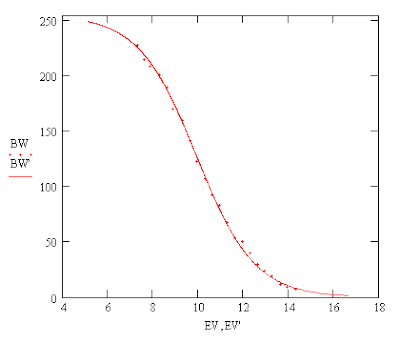I wanted to check how NIO translates exposures into B&W pixel values and I found that I needed to set the current through the RS green LED equal to 3.16 mA to cover a significant portion of the exposure curve. The slide viewer diffuser was placed between the LED and the camera to spread out the light as evenly as possible. The ISO was set to 100 and the f-Number, fN, was initially set at 2.8 while the exposure time was varied from 1/8 sec. to 1/2000 sec. I still needed more data so I left the exposure time at 1/2000 sec. and increased fN in increments from 2.8 to 8.0. The peak values for each image was then determined. The smooth curve is a fit which matches the data while keeping peak value at 255 and dropping to zero for large EV values.

The observed curve doesn't appear to be the power law with a gamma of 2.2 as was assumed earlier. We can refer to the exposure curve as NIO's observer function. It's part of a personal equation.


No comments:
Post a Comment